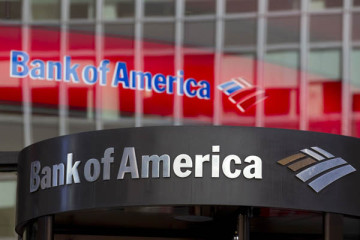Blog

New Report Reveals Practical Recommendations for Social Impact Bonds as Investor Interest Grows
With 26 social impact bonds (SIBs) currently in operation and dozens more in development globally, the sector is attracting increasing interest from investors seeking to align their values with their investments.
In light of this significant global momentum, a new report launched today by Bank of America Merrill Lynch and Bridges Ventures provides a timely guide to help those involved in the sector set themselves up for success.
Entitled Choosing social impact bonds: A practitioner’s guide, the report is the first piece of research that has looked globally across the initial wave of SIBs, capturing insights from early movers and reflecting on the lessons learned so far. The findings have been used to develop practical recommendations, including advice on design and how to maximise the impact of SIBs for three core groups: commissioners, service providers and investors.
SIBs are used across the world to help improve the lives of vulnerable individuals by targeting a wide range of social challenges including diverting children from care, supporting young people through training and employment, and reducing reoffending. According to the research, the increasing interest in SIBs – with almost 100 currently under development worldwide – lies in their ability to bring together three major trends:
- In light of increasingly tighter budgets, governments and donors are searching for ways to deliver better outcomes for beneficiaries using fewer resources.
- Impact-driven organisations continue to seek creative ways to increase desired programme outcomes in varied communities.
- There is an expanding pool of investors looking to harness the power of entrepreneurship to help address some of society’s toughest issues.
Unlike traditional arrangements where government and donors pay for a set of pre-defined activities, SIBs allow commissioners to reward service providers and their investors only if social outcomes are achieved. The report highlights how this “paying-by-results” approach encourages organisations to be more entrepreneurial and ‘customer-focused’ in their approach, looking for innovative ways to deliver social impact or improving existing programmes to focus even more on measurable results.
For investors, the report recommends engagement from the start of their investment, influencing service delivery beyond contract signing to maximise the chances of success in delivering financial returns and social outcomes. This will require investors to take a “hands on” approach from the outset. Where investors do not have the capacity or capability to do this directly, they might engage advisors or specialist fund managers to do this on their behalf.
“We see investors increasingly seeking opportunities that not only deliver a return on their investments but also help drive social change,” said Andy Sieg, head of Global Wealth and Retirement Solutions for Bank of America Merrill Lynch. “Social impact investing has the potential to tackle some of the world’s most challenging issues, the full potential of which can only be unlocked through close collaboration between organisations, investors and facilitators.”
Emilie Goodall, director of Projects, Bridges Impact+, says: “Social impact bonds have the potential to bring public, private and civic organisations not just into direct alignment but into an ongoing dialogue about how to address some of society's toughest challenges. By incentivising better outcomes, SIBs can improve the lives of many vulnerable people; both directly via the individual social impact bond and indirectly, because the organisations involved are applying what they’ve learned via the process to benefit other programmes they are commissioning or delivering.”
The report was conducted by Bridges Impact+, the advisory arm of Bridges Ventures that seeks to promote the growth of the sustainable and impact investment sector by offering practitioner-led advisory services. This is the second research collaboration between Bridges Ventures and Bank of America Merrill Lynch that earlier this year published “Shifting the Lens: A de-risking toolkit for Impact Investment”.



Comments